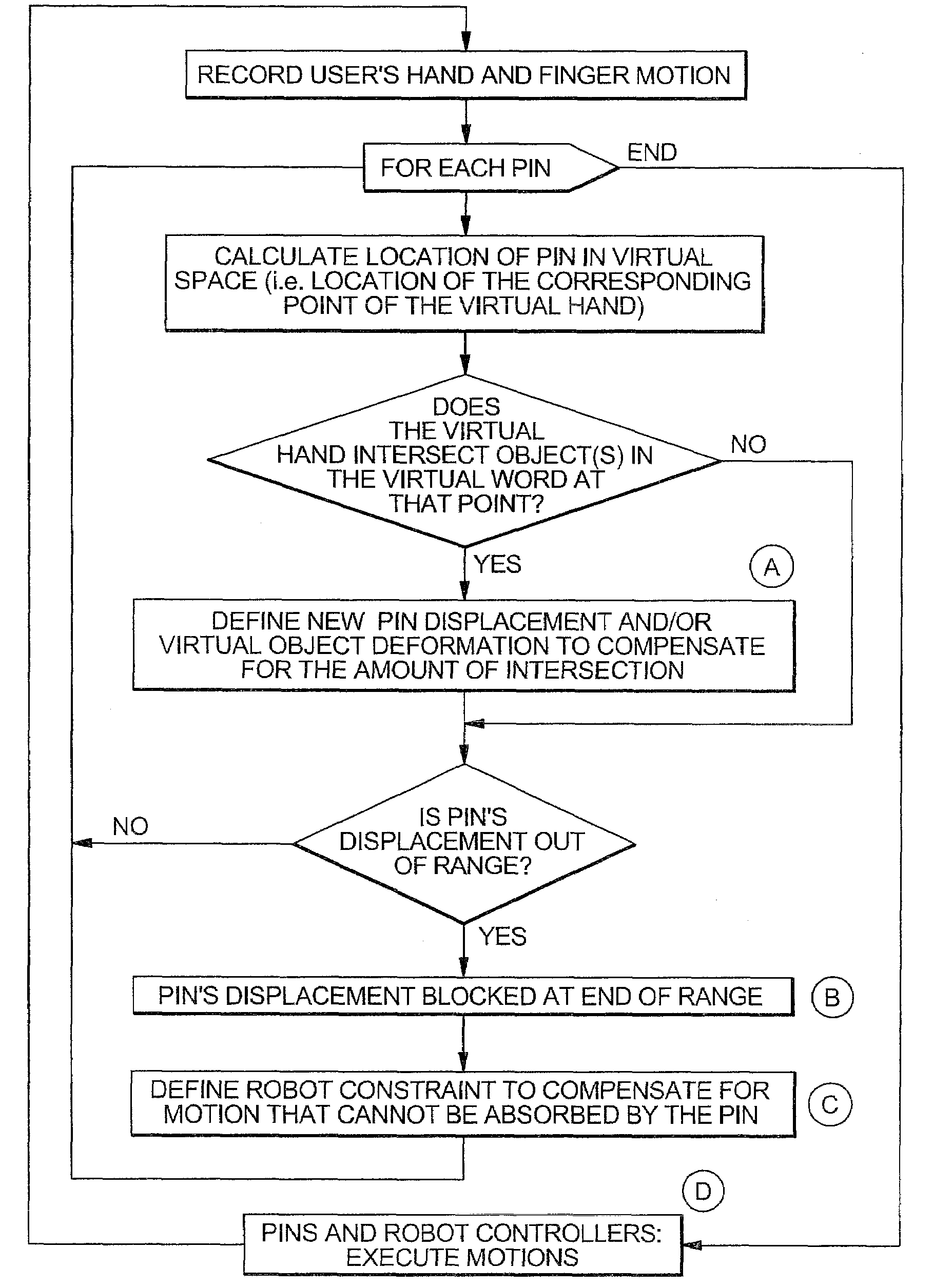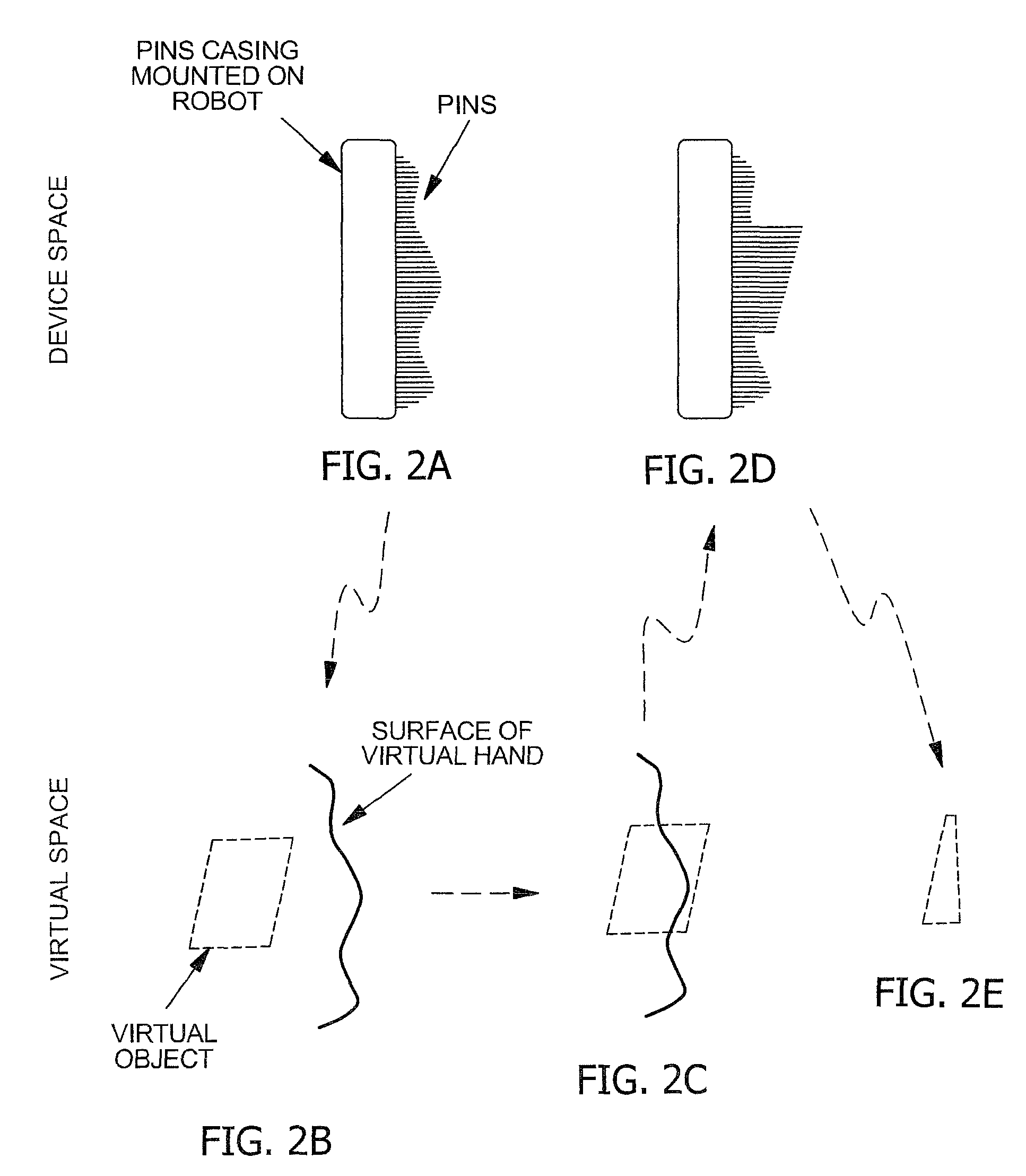Virtual hand: a new 3-D haptic interface and system for virtual environments
a virtual hand and environment technology, applied in the field of virtual hands, can solve the problems of limited touch sensitivity, collision detection, and very coarse or basic graphical object sampling, and achieve the effects of simple computer-generated display, rich tactile, and realistic sense of touch and feel of objects
- Summary
- Abstract
- Description
- Claims
- Application Information
AI Technical Summary
Benefits of technology
Problems solved by technology
Method used
Image
Examples
Embodiment Construction
[0041]Referring now in particular to FIG. 1 of the drawings, the control algorithm, as presented, manages the movements of pins and of a robot arm, as described in detail and illustrated in FIG. 5a in the above-referenced co-pending application, whereby it assumes that an endless loop is controlling the pins and the robot. Such control of the pins and the robot results in ensuring that there is no intersection between the virtual hand and the virtual objects in the virtual space. Whenever the user or object motion would result in an intersection between the virtual hand and the object(s), the control algorithm prevents this intersection, which it does by displacing the pins on the pin assembly, and if this is not possible because a pin range of motion has been exceeded, it changes the pin assembly position through an applicable motion of the robot.
[0042]It is the displacement of the pins on the pin assembly that provides the sense of touch to the user. The movement of the robot allo...
PUM
 Login to View More
Login to View More Abstract
Description
Claims
Application Information
 Login to View More
Login to View More - R&D
- Intellectual Property
- Life Sciences
- Materials
- Tech Scout
- Unparalleled Data Quality
- Higher Quality Content
- 60% Fewer Hallucinations
Browse by: Latest US Patents, China's latest patents, Technical Efficacy Thesaurus, Application Domain, Technology Topic, Popular Technical Reports.
© 2025 PatSnap. All rights reserved.Legal|Privacy policy|Modern Slavery Act Transparency Statement|Sitemap|About US| Contact US: help@patsnap.com



